The Network Approach to
State Institutions and Public Policy
Analysing Health Care Networks in Spain
Rodrigo Rodrigues-Silveira
University of Salamanca
Presentation
Structure
Main argument
(for those who prefer
to go right to the point)
Details
(for the bold and curious)
Details
...presentation of other visualizations or more information on some aspects of the data and the methodology.
Introduction
Analytical Framework
Why studying the capillarity of state institutions?
The case: health care Spain
A Spatial Network Analytical Framework
Empirical Outcomes
Data and Methods
Territorial Gasps in Service
Flows of Service: The Spatial Network of Care
Regions of Influence and Regional Network Topology
Centres of Health Provision
Results and Next Steps
Capillarity of the State
Actual flows within institutions
Different approaches to the spatial
organisation of the State:
- territorial
- spatial
Require complementary methodologies and data
Usually receives less attention (tan density or presence)
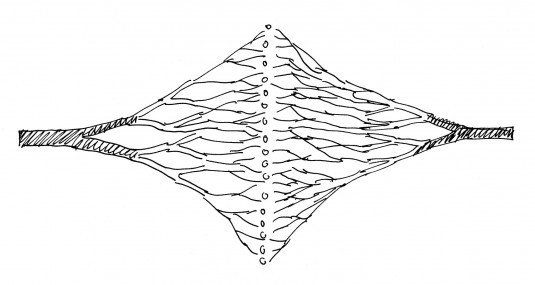
Elements of Stateness

Health Care in Spain
Decentralised to regions (Autonomous Communities)
Low level of inter-territorial coordination
Territorial coordination based on ad hoc agreements
Conflicts are deeply rooted and embedded due to:
- low hospital coverage in rural áreas
- absence of universal mechanisms regulating coordination
Spatial Network Analytical Framework
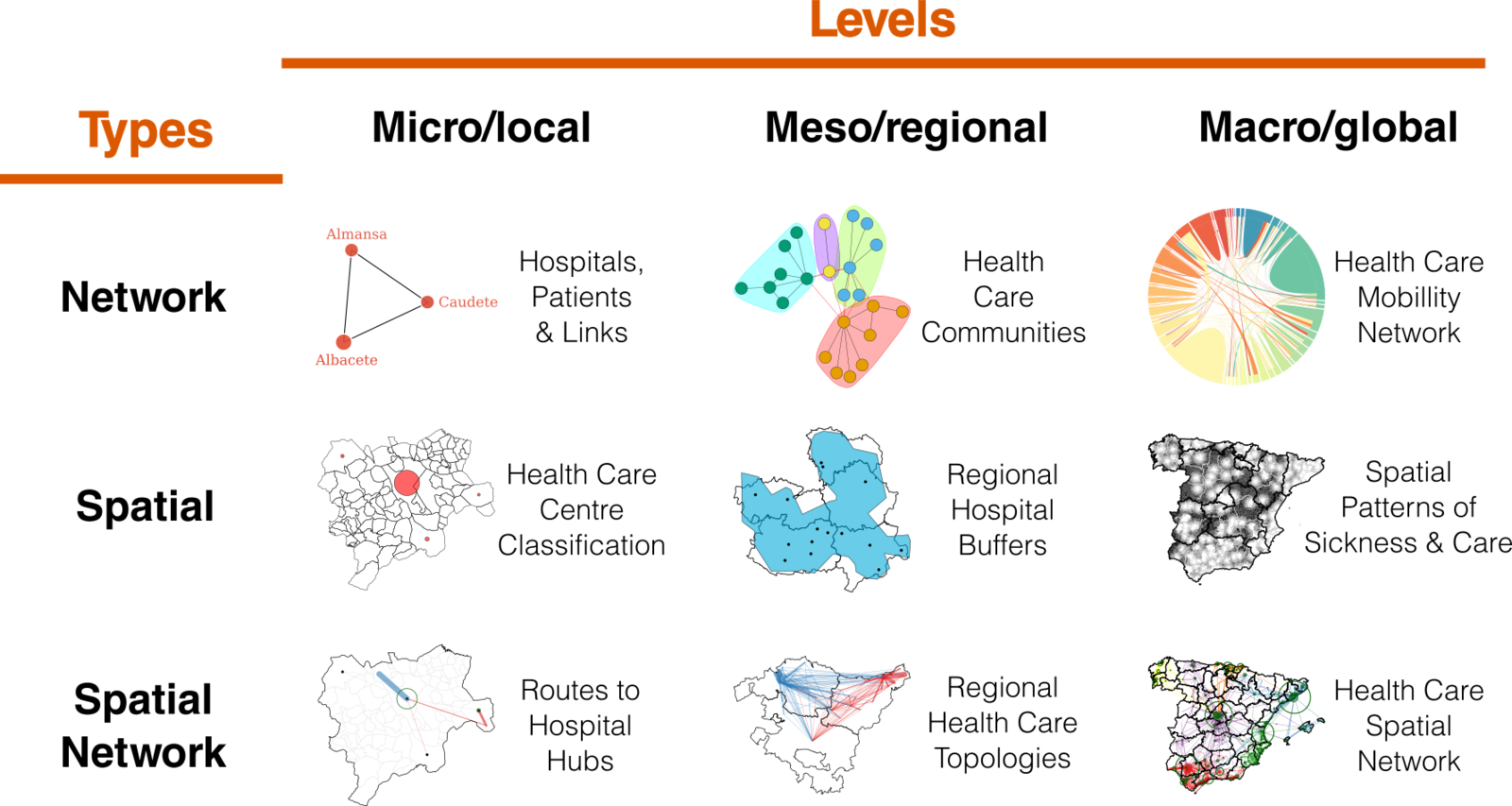
Data
Relatively simple information
Hospital location
(does a municipality possess a hospital?)
Birth records
(place of birth and residence of the mother)
Methods
Social Network Analysis
- centrality
- complexity
- topology
GIS
- thematic cartography
- areal interpolation
- buffer analysis
Data and Methods
Empirical Results
Figure 2.
State Presence: Euclidean distance to the nearest hospital
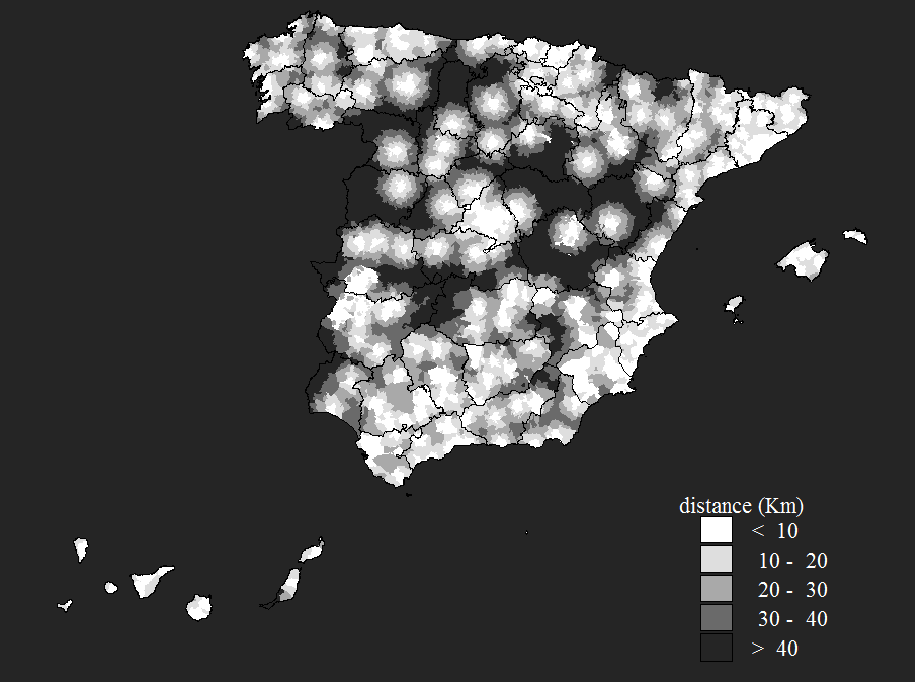
Coverage
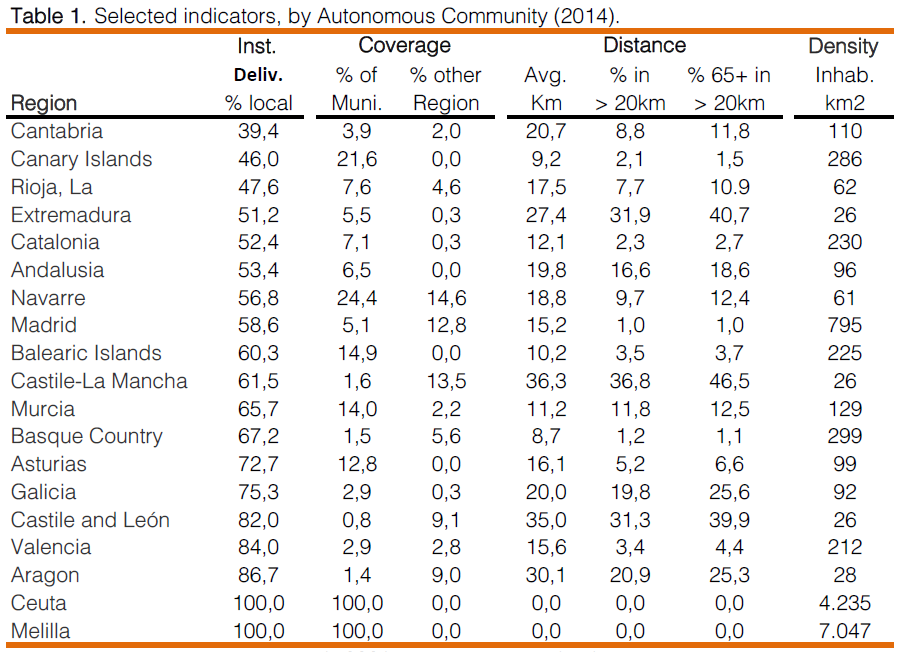
Figure 3.
Spatial network
of health care commuting
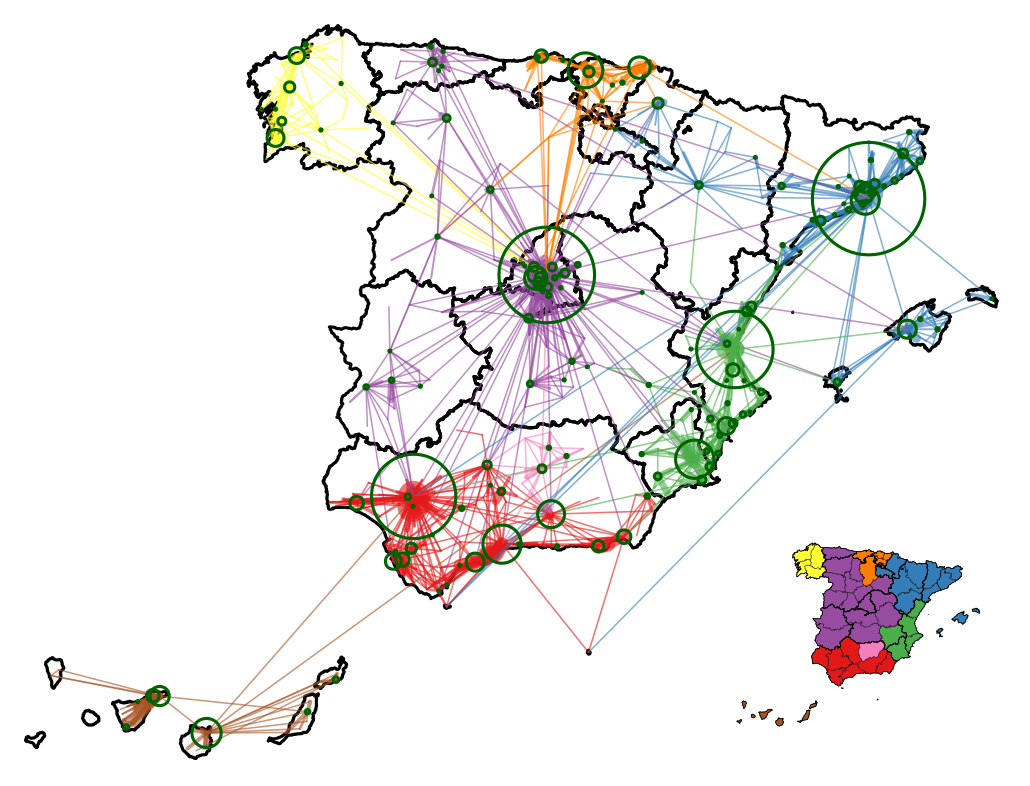
Spanish Network
Figure 4.
Care Buffers
Areas of influence
of hospitals in selected regions
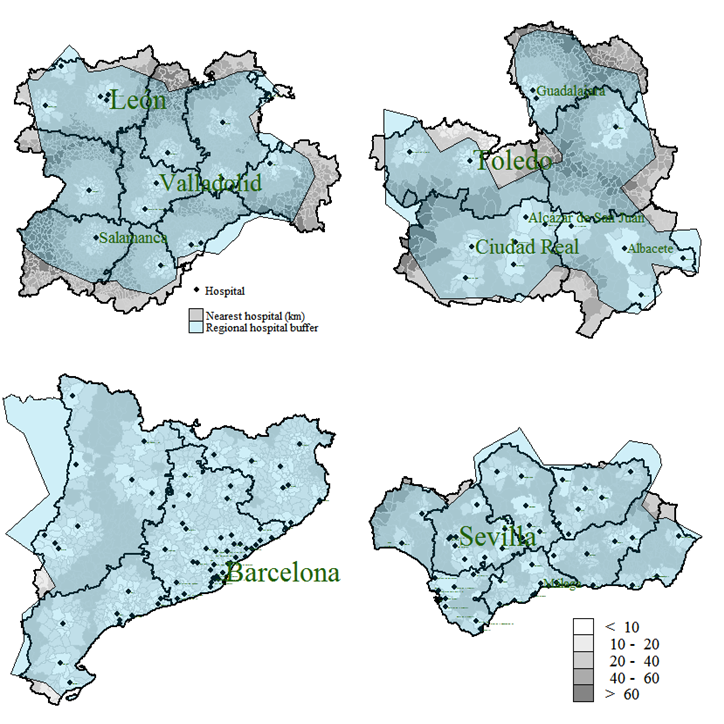
Figure 4.
Thiessen Polygons
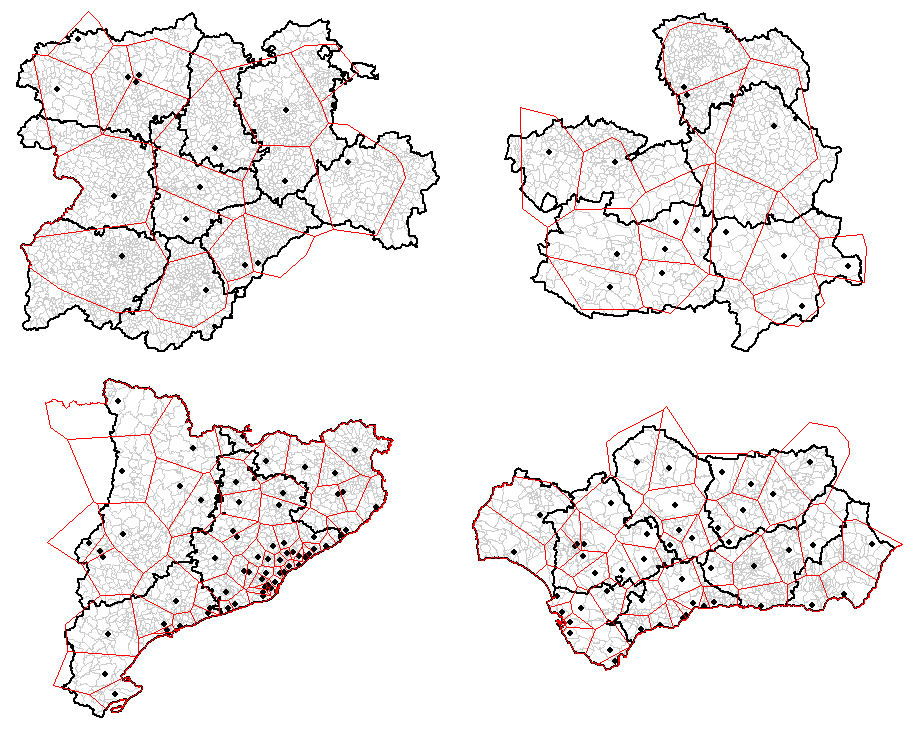
(before dissolving internal boundaries)
Figure 5. Topologies of regional births
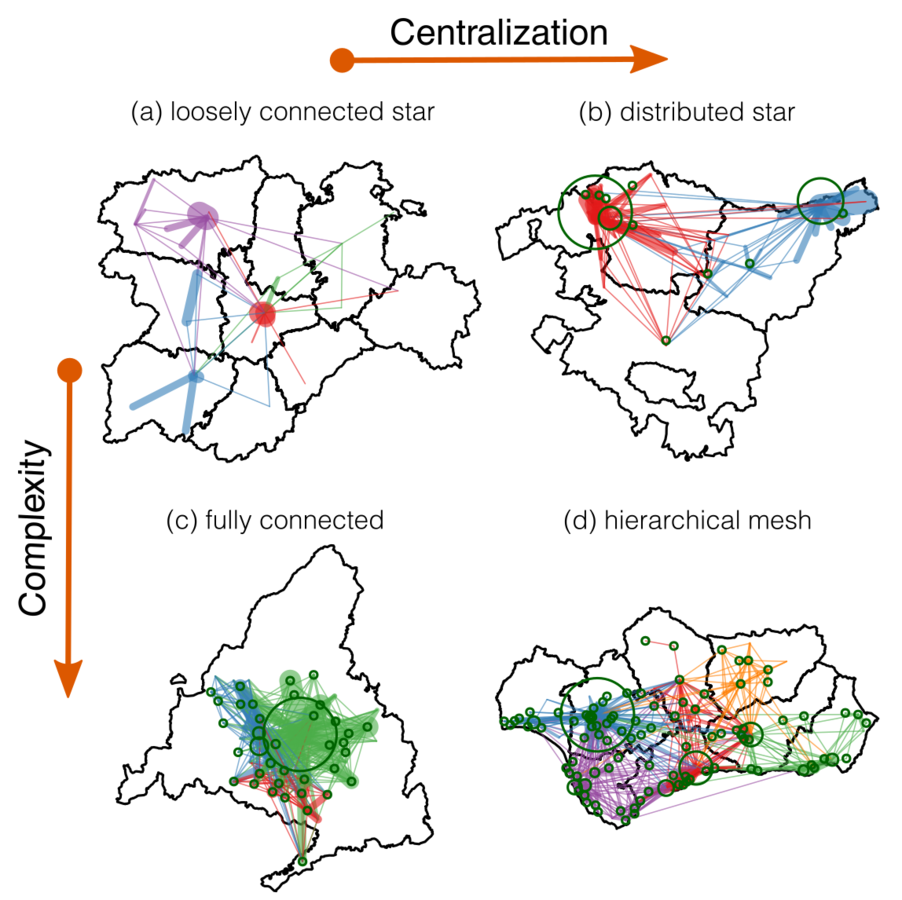
Institutional Topologies
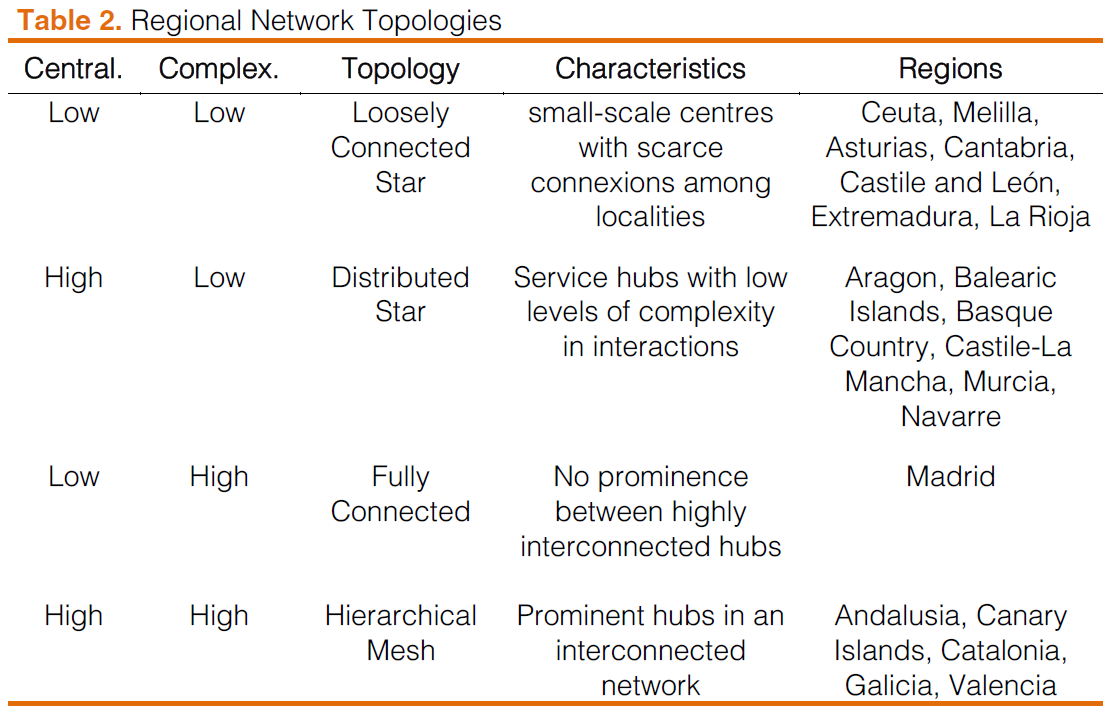
Castile and León
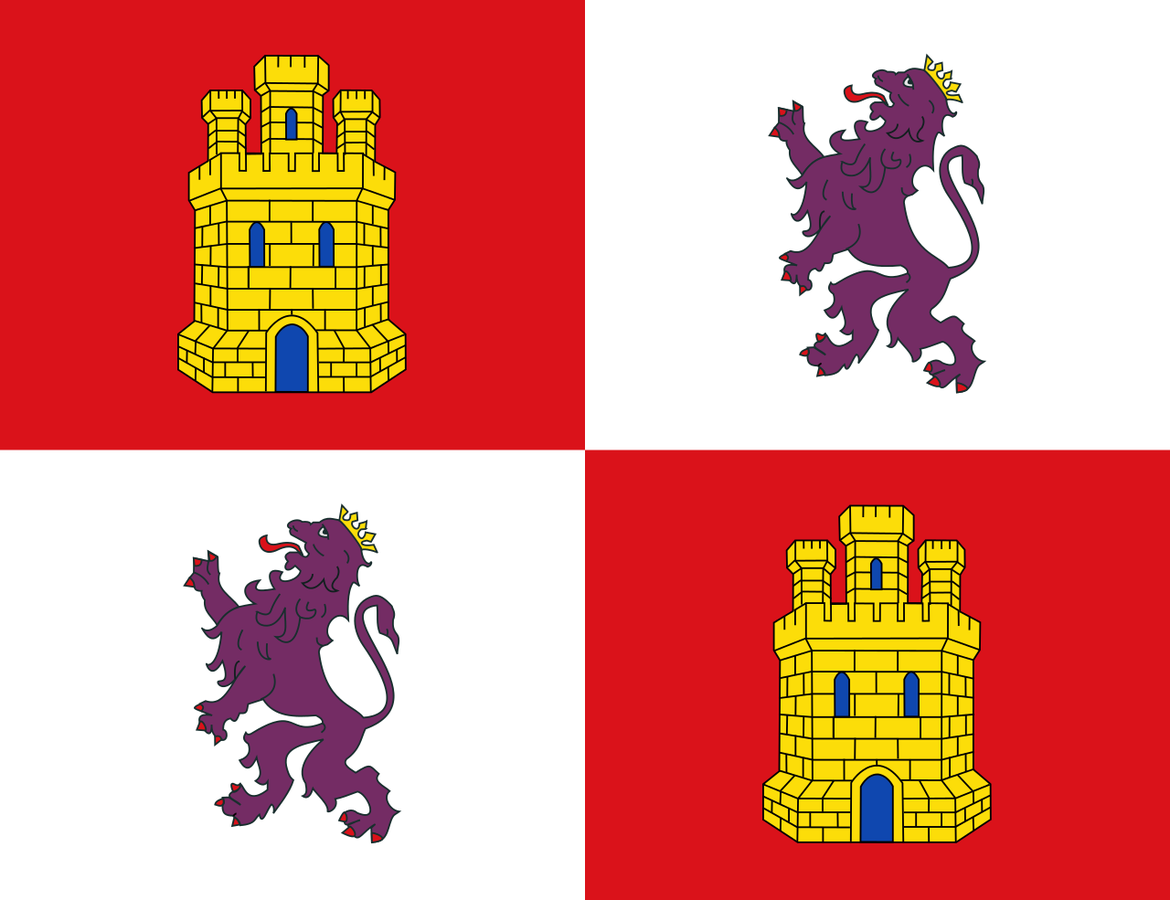
Basque Country
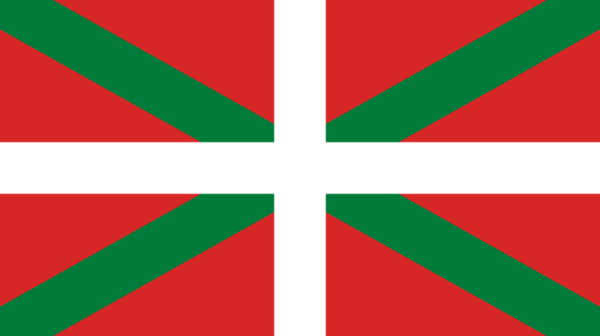
Madrid

Andalusia

Figure 6.
Types of location according to their role in health care provision
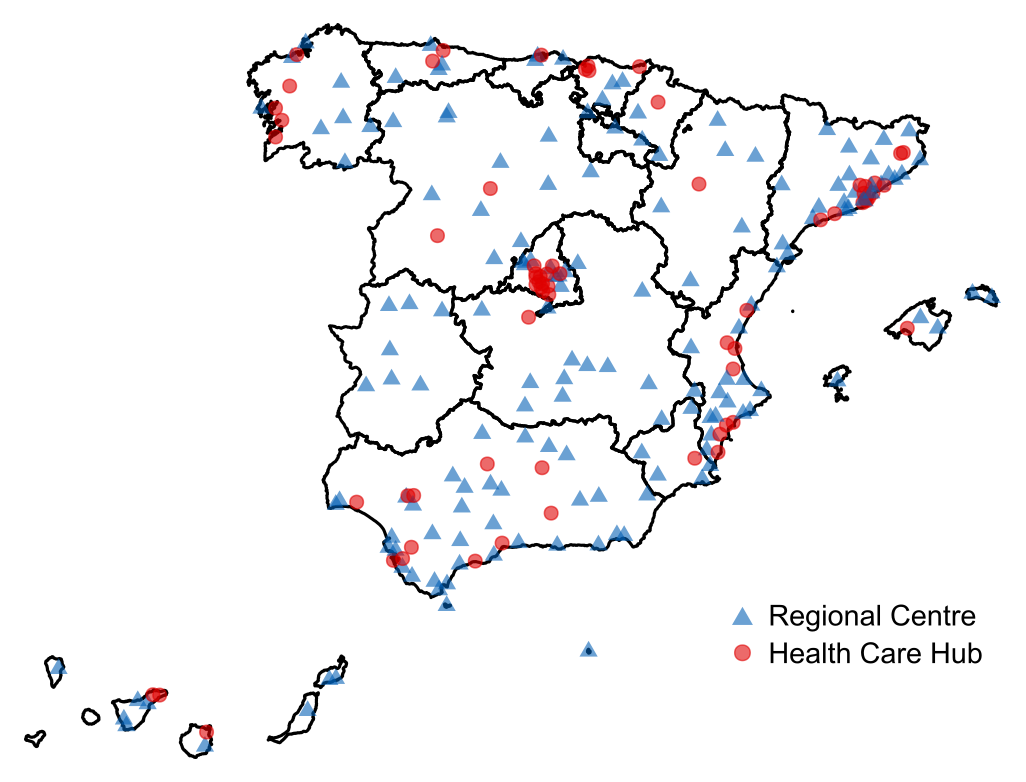
Types of service centre
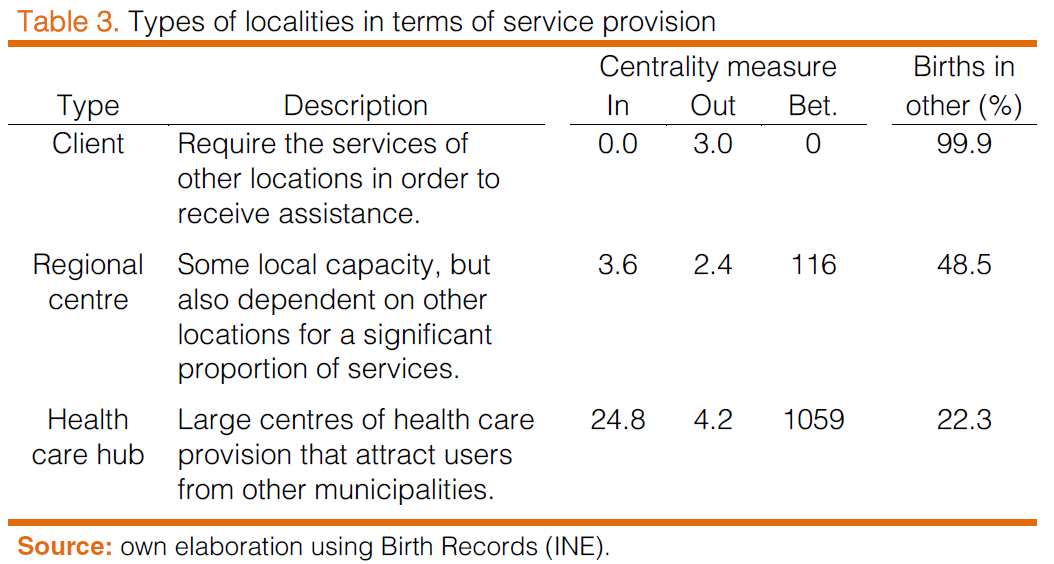
Outcomes
Spatial Networks as a tool:
- allows the representation of alternative territorialities
... in multiple scales
... comprehensively
- facilitates the assessment of coordination problems
- measures the capillarity of state institutions, but also its presence
Next Steps
Refine the classification of urban health care centres
Triangulate results obtained by births with other health care records (deaths, attention)
Introduce hospital complexity in the analysis (important for L.A. cases)
Thank You!
Comments and suggestions welcomed!
KCL - Subnational Politics, 2016
By Rodrigo Rodrigues-Silveira
KCL - Subnational Politics, 2016
- 92



